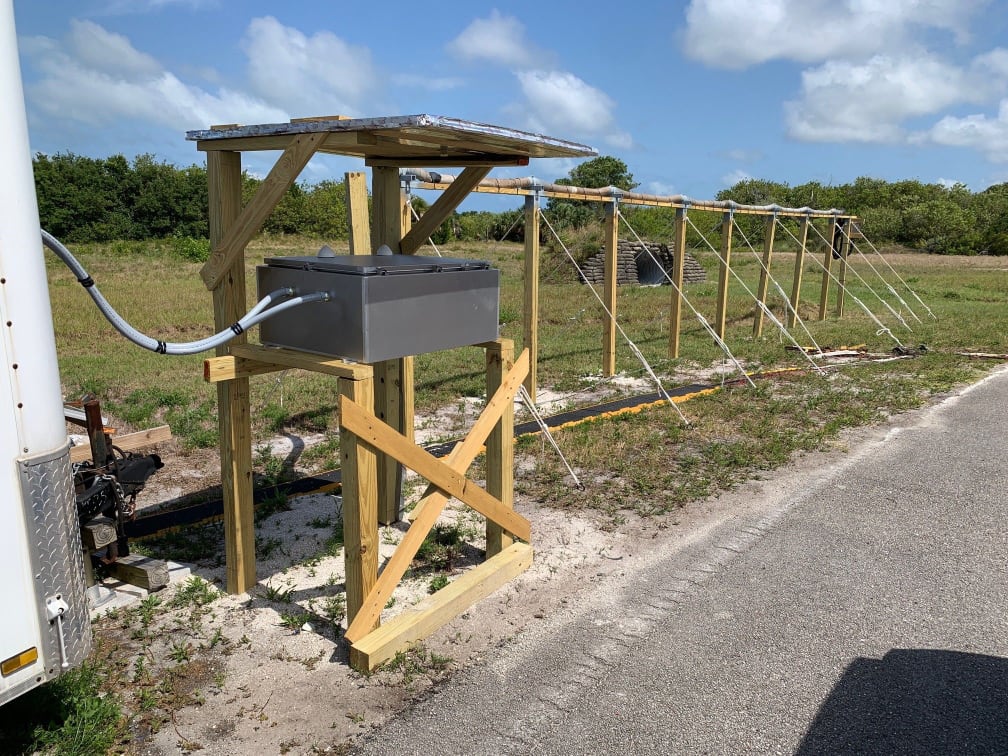JUPITER TMS CAPTURES DATA FOR NASA LSP UMBILICAL CABLE SIMULATION TESTING
Spacecraft awaiting launch connect to ground support equipment through large “umbilical” cables that provide power, control, and communication to various onboard systems. Often, the connected electronics are very sensitive to induced voltages and currents that are associated with nearby lightning strikes. NASA engineers have attempted to model the coupling of lightning signals onto the inner conductors of the umbilical cables, but the complexity of the problem is significant (both the electromagnetics and geometry).
Recently, NASA LSP (Launch Services Program) contracted SLS to deploy and instrument a spare 50-ft spacecraft umbilical cable at the Kennedy Space Center. SLS installed two of our ruggedized Jupiter TMS high-speed transient recorders to capture the overall umbilical current in addition to differential voltages, single-ended voltages, and currents on the inner paired conductors (both shielded and unshielded). The system is fully solar powered. The umbilical cable is elevated and provided with a bonded ground return path to form a large loop with area of about 300 sqft. NASA LSP will use the collected data from nearby lightning strikes to test the validity of their simulations. The system will collect data 24/7 throughout the Summer 2022 lightning season.

Categories

